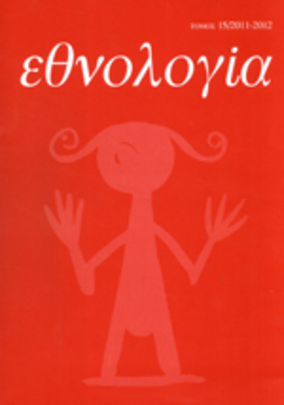Προίκα και κοινωνικο-οικονομικός μετασχηματισμός στη Σάμο κατά τον 19ο αιώνα
Part of : Εθνολογία : περιοδική έκδοση της Ελληνικής Εταιρείας Εθνολογίας ; Vol.4, No.1, 1995, pages 31-66
Issue:
Pages:
31-66
Parallel Title:
Dowry and socio-economic transformation on Samos during the nineteenth century
Author:
Abstract:
This article, based on the analysis of 660 dowry contracts, examines the changes affecting the dowry on Samos during the 19th century. In the second half of the century the dowry was transformed from a type representing diverging devolution to that of a marriage contribution intended exclusively for, and privileging, female children.On Samos children shared in the parental property independently of their sex and there was no discrimination according to order of birth. As for the dowry, it did not follow a sex-based line but reflected, instead, the principle of bilateral kinship.Given the type of specialization based on the combination of market-oriented agriculture, seafaring and commercial activities, the Samiote peasant communities had already entered into a monetized economy in the 19th century. The growth and the monetization of the island’s economy, rooted largely in the production of cash crops (wines and raisins), counteracted the difficulties which the rapid population increase could have caused for the reproduction of households. Undoubtedly, the involvement in commercial and trading activities had been leading to the accumulation of large properties and this had as a consequence the constantly increasing social differentiation. The uneven distribution of economic resources —landed and monetary ones— constituted the basic criterion for distinguishing social categories. One social category, consisting of brokers and merchants, exerted a significant degree of control over the local economy. The families belonging to this social category enjoyed especially high, non-agrarian incomes, deriving from commercial and money-lending activities, and also tended to intermarry. Yet, only for this very small portion of the population can we say that the practice of dowry-giving had yielded to the logic of monetization. For the rest of the population, although sums of money were being transferred with increased frequency as part of dowries, no change had occured toward a form of dowry more mobile and alienable.It is evident that money did not function as a means of comparison and as a general measure or equivalent for the estimation of the value of dowry goods. The surplus in monetary income allowed the peasant families to increase their landholdings and to acquire other immovable dower properties, such as houses. It is clear that the new economic possibilities helped to strengthen the practice of the norm of neolocality as well as the concomitant orientation toward the establishment of independent conjugal households at marriage. In the second half of the 19th century the tendency of dowries to include houses, which were often purchased, showed an overall increase; such a tendency .however, became much more prevalent in urban areas. This is one indication that the dowry had began to reflect the differentiation -on the level of socio-economic organization- between urban and rural areas.
Subject (LC):
Keywords:
Σάμος
Notes:
Περιέχει πίνακες




